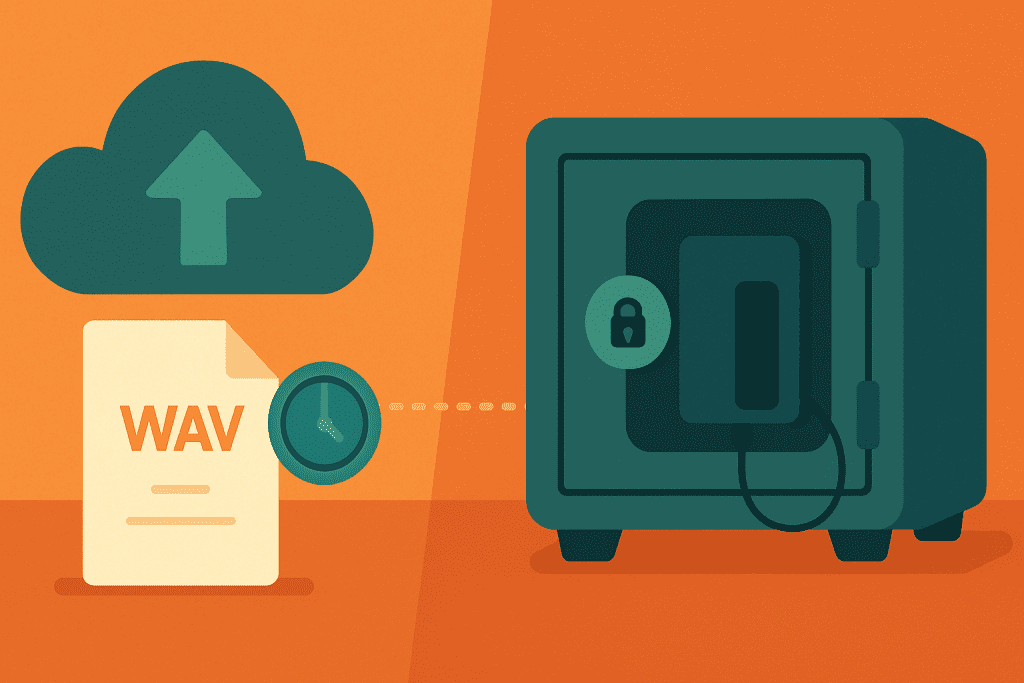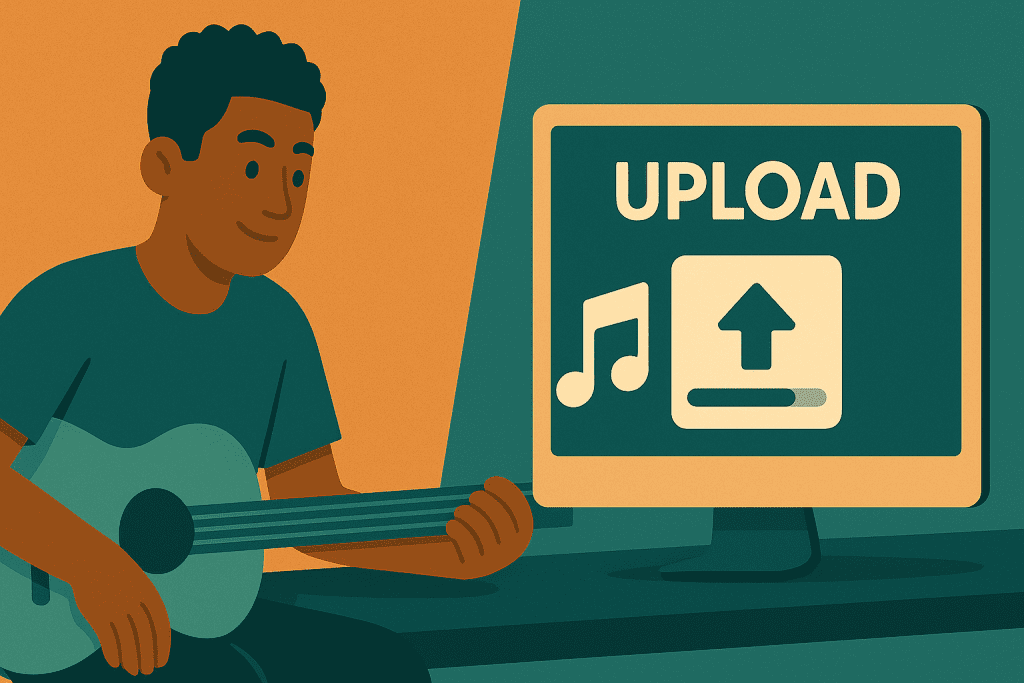Protecting your music and beats from theft is crucial for every producer, rapper, singer, or composer. In South Africa, as in most countries, copyright automatically protects your original music as soon as you record or write it down. However, proving you created a track first – and securing your rights – requires some proactive steps. Below, we outline practical ways to safeguard your beats and songs, from timestamping your files to using legal agreements and registrations.
1. Keep Original Project Files (Timestamped Proof of Creation)

Always save your original project files (the session files from FL Studio, Ableton, etc.) along with stems and dated exports. These files are golden evidence of when and how you created your music. The timestamps in the file metadata can demonstrate the creation date of your beat or song. For example, in a UK copyright case Ed Sheeran won a dispute by presenting his draft recordings and session files as proof of independent creation – showing the power of having your original files secured.
To maximize this protection, retain multiple backups of your project files. If you only keep them on your laptop, you risk losing evidence if the device is lost or crashes. Store copies on cloud storage services like Dropbox, Google Drive, or OneDrive, which automatically timestamp your uploads. Even an email backup to yourself can serve as proof, since older email attachments or files saved on reputable cloud servers will show a date. The goal is to have a verifiable date stamp that proves your work existed at a certain point in time.
2. Back Up Your Music Safely (Cloud and Physical Backups)

Beyond just keeping the project files, make sure you back up your music files in secure locations. A good practice is to use at least one cloud backup and one physical backup. Cloud storage not only protects you from hardware failure, but it also logs the upload date of your files. That upload date can act as a trusted timestamp if ever needed in a dispute. In other words, uploading your song or beat to a platform that shows the date can help prove the existence of your work at that time.
For example, you might finish a new beat and immediately save the WAV export to your Dropbox. If later someone claims they made a similar beat before you, your cloud backup’s timestamp can help refute that. Similarly, consider keeping an external hard drive or USB with your projects as an offline backup (stored safely). The key is redundancy: if your computer is sold or dies, your music won’t die with it – and you’ll still have time-stamped evidence of your creation.
3. Consider Official Copyright Registration (Extra Legal Protection)

Under South African law (and international Berne Convention rules), you do not need to register your music to have copyright – it’s yours upon creationi. However, if you want an extra layer of legal proof, you can consider official registration or timestamping services. In South Africa, the Companies and Intellectual Property Commission (CIPC) allows registration of certain works (notably cinematographic films) for copyright purposes, and while musical works are protected automatically, some creators still opt to register their songs with CIPC for a formal record. A CIPC registration creates an official legal timestamp that proves you owned that song on a specific date. Think of it like placing your music in a time-locked vault – it’s additional evidence that can be priceless in court during an infringement dispute.
If CIPC registration for music is cumbersome or limited, alternatives include: registering your work with an international copyright office (e.g. the US Copyright Office issues a certificate) or using private timestamping tools like WIPO PROOF or Songregistration.com. These services generate a certificate or digital fingerprint of your file with a date. While these steps aren’t mandatory, having official proof can significantly speed up resolving disputes on platforms like YouTube or with performing rights organizations. For an independent artist, it may not be feasible to register every single beat (there could be costs involved), but for your most valuable songs it’s worth considering. Remember: your music is automatically protected by copyright; these measures simply strengthen your evidence of that protection.
4. Register Your Music with SAMRO (and Other Rights Organizations)

Registering your songs with SAMRO (Southern African Music Rights Organisation) is an essential step for South African music creators. SAMRO is the performing rights organization (PRO) that collects royalties when your music is played on radio, TV, venues, etc., and ensures you get paid. As soon as you have a song ready (even before release), you should become a member of SAMRO and notify them of your works. This doesn’t involve sending them the audio; SAMRO (and the mechanical rights society CAPASSO) will track your works by their metadata (titles, composers, etc.) for royalty purposes. Registering with SAMRO helps establish ownership in their database – if someone else tries to register the same or a similar song, you’ll have a prior claim on record.
Do note, SAMRO’s registration alone is not absolute proof of copyright (since they don’t ask for the sound file). It’s mainly for royalty collection. In a copyright dispute, you’d still want the stronger proof we discussed (timestamps, files, or registrations). That said, having your work registered with SAMRO means you’re formally claiming authorship. Also consider registering with CAPASSO (for mechanical rights on downloads/streams) and SAMPRA (South African Performers’ Rights Association, for sound recording royalties if you’re the recording artist or producer). These organizations ensure you collect all the royalties you’re entitled to when your music is used. In short, joining SAMRO (and related bodies) protects your interests financially and adds a layer of recognition that the work is yours. (If you’re not sure how to register with SAMRO, check out our guide on the process – it’s a straightforward online signup.)
Important: Register your songs sooner rather than later. In rare cases, disputes arise if someone else fraudulently registers your song with SAMRO before you do. By registering early, you lock in your claim. And if any ownership conflict comes up within SAMRO or CAPASSO, you will be in a stronger position to assert your rights (backed by the creation evidence you saved earlier).
5. Release and Upload Your Music to Establish a Public Record

One effective way to prevent others from stealing your music is to publicly release or upload your tracks (even in a limited form) as early as makes sense. When you upload your song to a platform like Spotify, Apple Music, YouTube, SoundCloud, or BeatStars, that platform will show a release date or upload date. This creates a public timestamp that anyone can verify. If someone later claims your melody or beat is theirs, you can point to your track’s publication date. Having your music “out there” first makes it much harder for a copycat to convince others that they were the originator.
For example, if you made a beat and plan to showcase it on YouTube, consider first distributing it to streaming services (through a distributor) or uploading it for sale on BeatStars. Services like DistroKid or TuneCore can get your track on Spotify and generate an ISRC code, officially marking the release. Even uploading to SoundCloud (with a clear date) or a private YouTube video can help. The key is that the platform’s timestamp is evidence: “This song existed under my name on this date.” As one guide advises, uploading your music to platforms that timestamp content can indicate the existence of your work at a specific point in time.
Additionally, leverage Content ID systems to your advantage. Platforms like YouTube and Facebook use Content ID to detect when your audio is used in someone else’s video. If you’re an independent artist not signed to a label, you can use services like Identifyy (by HAAWK) to register your tracks in Content ID. Identifyy will fingerprint your music and automatically flag or monetize any YouTube video or Facebook/Instagram post that uses your audio without permission. This not only deters theft (anyone attempting to re-upload your track will get a copyright claim), but it also helps you earn revenue if it happens. Many beat makers upload their beats to Identifyy or similar services before releasing them widely, so that the content is protected on major platforms from day one.
Tip: When you share your music publicly, make sure your artist name and proper credits are attached. Also, fill in the metadata (song title, composer, year, etc.) in the file or platform – it helps in identification. Some creators also use audio watermarks or tags on preview versions of beats. For instance, a subtle voice tag or sound every 30 seconds in an unreleased beat can discourage someone from simply ripping it and using it. Once the beat is sold or officially released, you can provide the untagged version. While watermarking won’t stop someone determined to steal, it will make theft more inconvenient and obvious. Combine this with Content ID, and you have a strong net of protection: the watermark deters casual theft, and Content ID catches any attempted misuse.
6. Use Contracts and NDAs to Safeguard Your Work

Legal agreements are another powerful tool to protect your music, especially when working with others. If you’re collaborating with producers, writers, or sharing your unreleased tracks with industry folks, consider using Non-Disclosure Agreements (NDAs) and clear contracts. An NDA is a contract where the parties agree to keep certain information confidential. In the music context, an NDA can legally prohibit someone from leaking or sharing your unreleased song, beat, or even the idea behind it. It ensures everyone involved understands that the material is confidential until official release. NDAs are crucial in safeguarding unreleased music, lyrics, melodies, beats and other proprietary info during the production process. By having team members or collaborators sign an NDA, you protect your intellectual property and set expectations: if they do leak or steal the music, they would be in breach of contract (which gives you legal grounds to take action).
In addition to NDAs, use proper contracts for collaborations, beat sales, or sessions. Whenever you work with someone else on a track, have a written agreement on who owns what rights. For example: if you hire a session musician or a producer to contribute to your song, have a work-for-hire or split sheet agreement stating that you retain ownership of the master/song and outlining their share (if any) in songwriting or royalties. This prevents misunderstandings where a contributor might later claim a bigger role or ownership. If you’re a beat maker leasing or selling a beat to an artist, use a license agreement that clearly limits how the beat can be used and ensures you’re credited.
All these contracts might seem like extra paperwork, but solid paperwork is your backup if there’s ever a dispute over ownership or credits. For instance, a split sheet signed by all writers will quickly settle any argument about who wrote the hook or the beat. A beat license will make clear that the artist can use the beat on X project but cannot resell it or claim authorship. Essentially, don’t rely on trust or memory – get it in writing. Save digital copies of all agreements and even important emails, and back these up too. If someone violates the deal or tries to steal your work, those documents put you in a much stronger position to enforce your rights.
Lastly, if you’re sharing demos with labels, publishers, or managers, an NDA might not always be feasible (big companies might refuse to sign unsolicited NDAs). In those cases, at least ensure you’ve done all the other protective steps (timestamps, registration, etc.) before sending out your music. That way, even if they won’t sign an NDA, you still have proof the work is yours and is protected. And if a label or third party does express interest in your music or beats, never sign any contract without reading it carefully or consulting a music attorney – you want to be sure you’re not inadvertently giving away your rights.
7. Monitor Your Music and Enforce Your Rights

Protection doesn’t end once your music is out in the world – you should also monitor its usage. Make a habit of checking platforms to see if your work pops up without credit. This is where Content ID (via Identifyy or your distributor) will help by notifying you of matches on major platforms. Additionally, you can set up Google Alerts for your song title or use services like AudioLock or TuneSat to detect unauthorized uses. If you do find someone has uploaded or released your music without permission, take action promptly: file a copyright takedown notice (DMCA) on the platform, or ask your lawyer to send a cease-and-desist letter. South African law provides remedies for infringement, and having all the evidence we discussed (timestamps, registrations, contracts) means you can assert your rights confidently. In many cases, a platform will remove infringing content once you prove you’re the original creator.
Staying vigilant also means keeping an eye on royalty statements (from SAMRO, CAPASSO, distributors, etc.) to ensure you’re being paid for all uses of your music. If you see a usage you didn’t authorize or missing income you expected, investigate it – it could be an instance of unreported usage or even someone else falsely claiming your work. By monitoring and reacting quickly, you not only protect your rights but also your revenue.
8. Know the Law and Your Rights

Understanding the basics of copyright law will empower you to protect your music more effectively. In South Africa, any original musical work you create (a beat, a song with lyrics, etc.) is automatically protected by copyright as soon as it is in a recorded or written form. You, as the creator, are the default copyright owner. This means you have the exclusive rights to reproduce, distribute, perform, and adapt that music. You do not have to “register” or put a © notice for the copyright to exist – it’s already yours. However, adding a © notice with your name and the year on your releases is a good practice; it serves as a public reminder that the work is protected and who to contact for licensing. It can deter casual infringement and will be recognized in other countries too.
South Africa is a member of the Berne Convention, so your music is also protected in many other countries automatically. That said, if you plan to distribute internationally (especially in major markets like the U.S.), consider registering your song in those countries for added legal benefits (for example, in the U.S., registration is required to sue for statutory damages).
Enforcement: If someone does steal your music (e.g., releases your beat under their name or samples your track without clearance), you have the right to pursue legal action for copyright infringement. This could involve an attorney sending a letter or filing a lawsuit seeking an injunction and damages. Often, the threat is enough if you can show clear proof of ownership – which brings us full circle to why all the steps above (timestamps, registrations, contracts, etc.) are so important. They give you the leverage to stop an infringer in their tracks. As the saying goes, prevention is better than cure, but if infringement happens, being prepared is the next best thing.
Conclusion
For beat makers, artists, rappers, singers, and producers in South Africa, protecting your music is about combining good creative habits with smart legal steps. Always save and back up your work to capture that all-important timestamp. Register with bodies like SAMRO to safeguard your royalty streams and publicly stake your claim to your songs. Use modern tools – from cloud storage to Content ID services like Identifyy – to document and monitor your music’s use. And don’t shy away from contracts and NDAs; they might feel formal, but they are often the only thing standing between you and someone else profiting off your idea.
In the digital age, every file can carry a footprint of when it was created and who owns it. By following the above steps, you’ll create a strong web of protection around your beats and tracks. This means you can focus on making music with peace of mind, knowing you’ve done your homework to keep your art safe from theft. Your creativity deserves nothing less – and if you ever do face a copycat, you’ll be equipped to prove beyond doubt that “I made this, and I made it first.”
Sources:
- Wes Law Africa – Guide to Protecting Your Tracksweslawafrica.co.zaweslawafrica.co.zaweslawafrica.co.za
- Wes Law Africa – Guide to Protecting Your Tracks (dispute advice)weslawafrica.co.zaweslawafrica.co.za
- MelodyRights – 2025 Artist’s Guide: Protect Your Musicmelodyrights.commelodyrights.com
- Thomas Reynolds Law – Importance of NDAs in Music Productionthomasreynoldslaw.com
- SongLifty – Navigating Music Copyright for New Artistssonglifty.com
- CIPC (South Africa) – Copyright Basicscipc.co.za
- iGerent – Copyright in South Africaigerent.com


